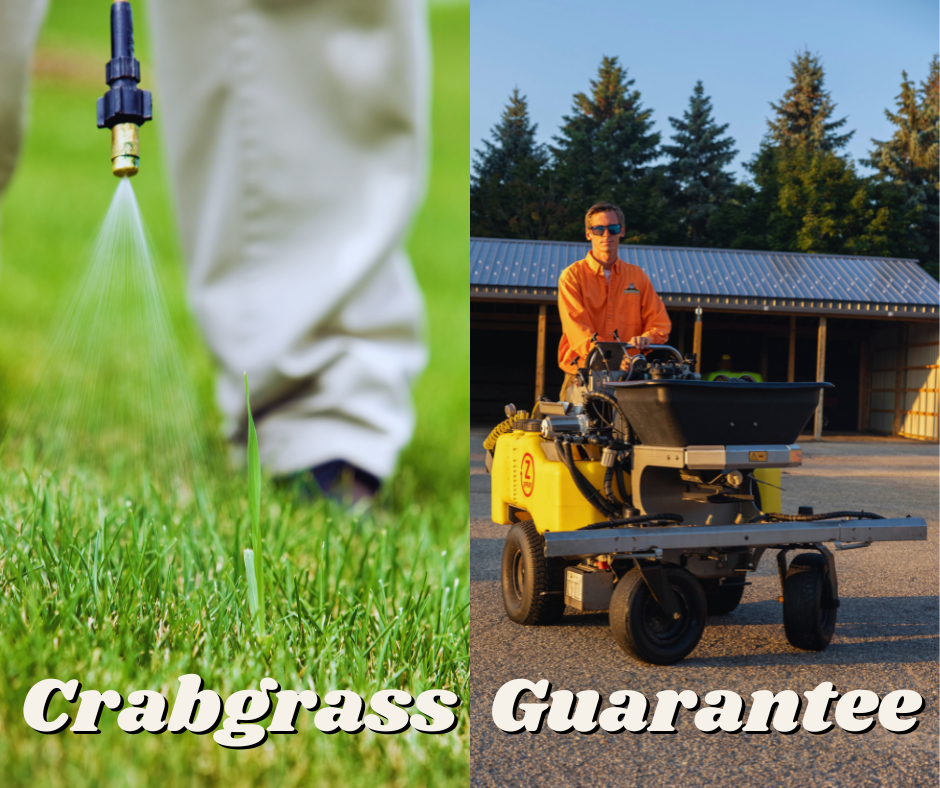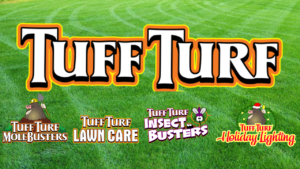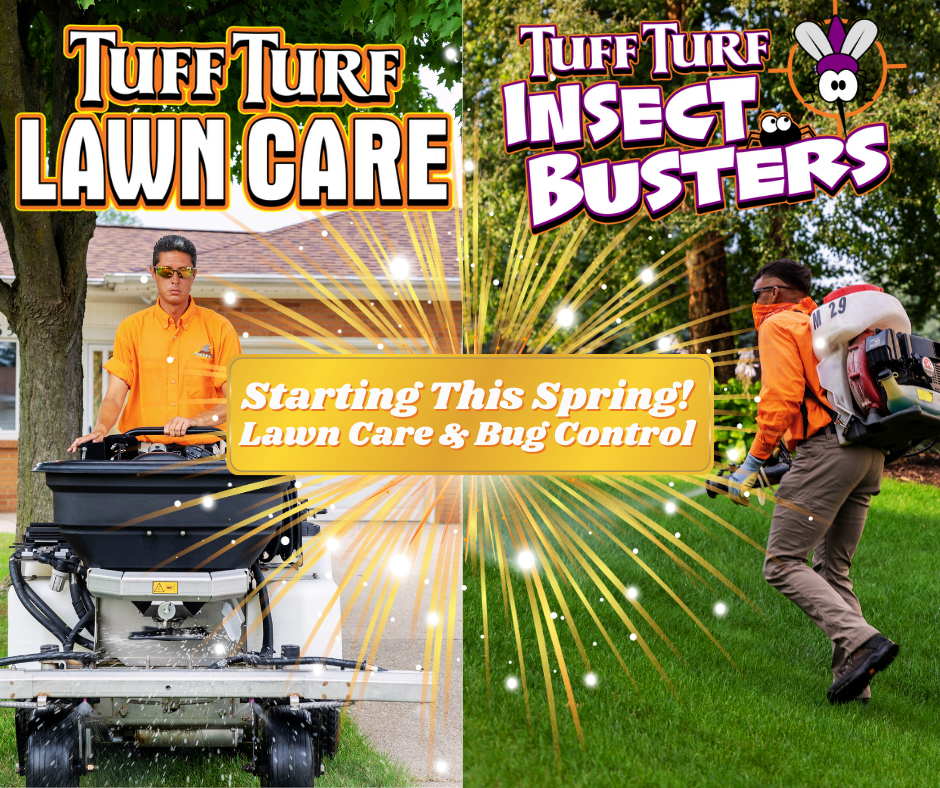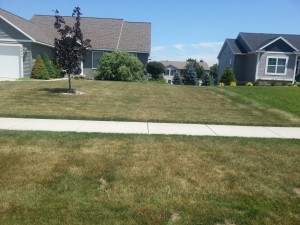West Michigan Lawn Care – The Crabgrass Guarantee
February 22nd, 2024 by Tuff Turf MolebustersWatering Tips
July 16th, 2013 by Tuff Turf MolebustersThis week will be a scorcher. Do not wait for your lawn to turn brown before you sprinkle. If you wait for the lawn to turn brown it takes 4 times as much water to bring the grass back. I am afraid this email may be too late for some, but make sure you are watering your lawn twice a day now. Once at 4:00 AM, and again at 1:00 PM, assuming there are no sprinkling bans in your area. Your grass is a lot like humans. If you work or exercise outside all day you need to take care of yourself by drinking lots of water on a continuous basis. It would not be wise to try to conserve your bottle of water until you are light headed, your sweating stops, you have stomach cramps, dizziness, and other signs of heat fatigue. An IV and a trip to the urgent care cost a lot more money and time than bottles of water throughout the day.
Watering Your Landscaping
Trees are the opposite of grass. Trees need deep watering cycles. Put a garden hose out at the base of your ornamental trees and let it trickle for several hours. Just because your grass is green, that does not mean your trees are getting enough water.
Mow your grass as high as you can, or skip it this week. Mowing your lawn during this heat can stress it out.
Continue This Conversation
I post these tips on Facebook. I would like to know how much you are watering to keep your grass green. Please comment on our Facebook page because I know there are other clients that are curious as well. I have not heard about any sprinkling bans in the Grand Rapids area. Please post if you are in a sprinkling ban.
Make sure to take care of yourself and your pets.
Dry Lawns
July 10th, 2013 by Tuff Turf MolebustersIn this heat, make sure to sprinkle the grass twice every day. The lawn on the left is sprinkling, but not nearly enough.
Spring Seeding
March 7th, 2011 by Tuff Turf MolebustersPart I: Spring seeding options
(This turf tip is part of a three part series on spring seeding.)
Seeding in spring is difficult and often unsuccessful. However, there are circumstances that warrant a spring seeding:
*Thin turf due to winter damage
*Poor turf density due to poor recovery from previous year’s problems, i.e., grub damage, drought damage, etc. This is the case in 2011 due to heat and drought in 2010.
*Construction of a new home or business.
If a spring seeding is necessary, consider doing it before the ground thaws from winter. Although it is not necessary to seed before the ground thaws it may make seeding more easy as soils are often soft and moist in the spring which may make it more difficult to seed certain areas, especially with heavier equipment.
Seed planted now will lie dormant until the soil temperatures warm in late March, April or possibly May. Depending on your location in Indiana, dormant seeding can be done as early as Thanksgiving and as late as March. The benefit of dormant seeding is that as the soil heaves and cracks during the winter, crevices are created for the seeds which provide ideal germination conditions. Additionally, dormant seeding is easier to schedule than spring seeding, because spring rains make it difficult to find the right time to seed after March in Michigan. Seed can also be planted in April and May, but a March seeding date will allow more time for root development before summer.
Although any cool-season grass can be seeded in the spring, spring seedings are more successful with tall fescue and perennial ryegrass than with Kentucky bluegrass due to the faster germination rate and better seedling vigor of perennial ryegrass and tall fescue compared to Kentucky bluegrass (Fig. 1). If Kentucky bluegrass is seeded in the spring consider using a mixture of tall fescue: Kentucky bluegrass (90:10, weight: weight) or a mixture of Kentucky bluegrass:perennial ryegrass (such as 80:20, weight: weight)(Table 1). Seeding Kentucky bluegrass alone will result in marginal bluegrass establishment due to the slow germination and vigor of the seedlings and increased competition from crabgrass.

Fig. 1. Germination of perennial ryegrass (left, PR) will be followed by tall fescue (center, TF) and then Kentucky bluegrass (right, KBG).
Species Seeding (rate lbs/1,000 ft2) Days to germinate
Kentucky bluegrass 1.0 to 2.0 10-21
Kentucky bluegrass + perennial ryegrass 3.0 to 6.0 5-21
Tall fescue 8.0 to 10.0 6-10
Fertilizing
New turfgrass seedlings have poorly developed root systems and thus they cannot affectively take up the nutrients from the soil. Therefore, frequent Lawn Fertilizing is important after seeding to encourage establishment. To help the turf establish, apply a “starter fertilizer” to enhance seed germination and development. Starter fertilizer is high in phosphorus which is listed as the second number in the analysis on the fertilizer bag. For instance, a 16-22-8 fertilizer contains 22% P2O5. Apply the fertilizer according to the label directions would should supply at least 1.0 lb. P2O5 /1000 ft2. This application will likely include nitrogen (first number in the fertilizer analysis), which will also help the turf develop an extensive fibrous root system that is better able to take up nutrients and obtain water.




